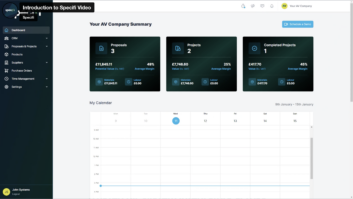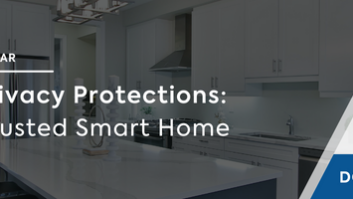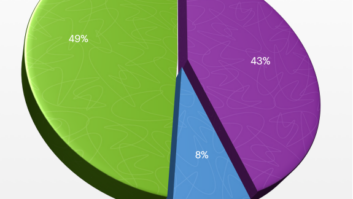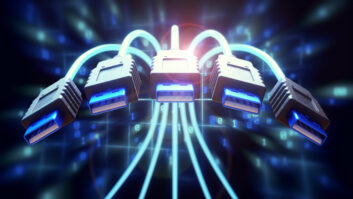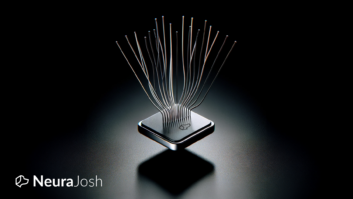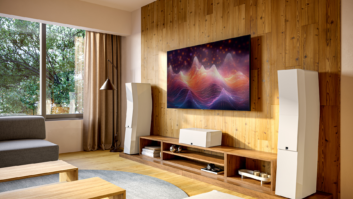Confession: When asked if I wanted to review zBoost’s ZB575 TRIO SOHO cellular/data booster, I thought it was going to be a walk in the park; I’d measure for the strongest signal, I’d put up the antenna, I’d take some before-and- after readings, and I’d fill the review with some fluff about how important cell phones are in the modern world, blah-blah. In truth, this was one of the most challenging and time-consuming reviews that I’ve done, taking multiple different installation attempts at two locations to fully understand the system and get it to work correctly.

While the ZB575 boosts cell signals for all carriers, it is available in specific AT&T and Verizon models to boost 4G LTE data for those carriers. We all have clients married to their cell phones, but they receive spotty reception inside of their homes. Whether the home has a metal roof or concrete walls or is just in a fringe area, reception inside many homes is terrible. In fact at my company’s CI showroom, my desk is located in a periodic cell dead spot where the signal just totally drops. A cellular booster is a relatively simple system that consists of an external antenna that grabs a stronger signal and then carries it via coax cabling to an amplifier that boosts the signal for better coverage. While the ZB575 boosts cell signals for all carriers, it is available in specific AT&T and Verizon models to boost 4G LTE data for those carriers.
Antenna positioning is critical. In fact, positioning the antenna is the single most important thing in the entire install. Fortunately there are a variety of tools to help with this. iPhone users can dial *3001#12345#* and then press “call,” which places the iPhone into field test mode and measures signal strength in dB–a far finer measurement than the five bars. (Android signal strength is found under Settings – About Phone and then either under Network or Status depending on the model.) Now you can walk around and locate the strongest (lowest –dB rating) signal.
zBoost also offers the YX699 RF signal meter that measures both 800 and 1,900 MHz bands. The YX699’s advantage is that it attaches directly to the antenna and the 50 feet of coax to provide an accurate reading of the signal arriving at the amp. If you are going to install zBoost professionally, then definitely purchase this tool.
Once the strongest signal is located, place the antenna at the highest point possible – it needs at least 15 feet of vertical separation from the amp– but not within three feet of any metal and within the 50-foot cable run of the amp. While the cable looks like standard dual-shield RG6, zBoost says you need to use their cabling (extensions are available, and an RG11 cable can be used up to 100 feet) because the product is FCC certified as a system. Once the cable is connected to the amp and powered up, then a series of blinking lights indicates the signal quality received.
I installed the antenna at two locations at my showroom and three locations at my home. While improving signal for phone calls and texts wasn’t difficult, boosting a pathetic -102 dB signal to -85, improving LTE data speeds proved far more challenging.

A cellular booster is a pretty simple system that consists of an external antenna that grabs a stronger signal and then carries it via coax cabling to an amplifier that boosts the signal for better coverage. At my showroom, I already received incredibly fast LTE (up to 27 Mbps down) without the zBoost, so zBoost couldn’t improve that. At my home, however, my data rates were abysmal–often not connecting at all or being between 0.1 to 0.5 Mbps, so it seemed like a terrific test bed.
After locating the strongest signal for the antenna and routing the cabling, I measured. While there was again significant increase in cell signal strength for calls/texts, data rates were none better. The problem was that LTE performance outside my home and around my neighborhood was also terrible, yielding the same sub 1 Mbps performance, so there was nothing for the SOHO to improve.
Instead of the omnidirectional antenna of the SOHO, zBoost recommended using its more powerful directional antenna included with the ZB575X TRIO Xtreme. Using the YX699 attached to the antenna, I walked around my home and located the strongest signal and fine-tuned the aim. Again, my data rate remained terrible. At zBoost’s suggestion, I used the free OpenSignal app to locate the direction of the strongest cell tower in my area, and then relocated and re-aimed the antenna. Finally I was able to see significant improvement with data rates now averaging 2.87 Mbps and peaking around 4.5 Mbps.
Ultimately zBoost worked as promised and definitely improved cell reception, but set up and installation are crucial and can be tricky. And while a site survey is invaluable, it might not tell how well the system will perform until it is actually installed. Before attempting an install, make sure a strong signal exists outside the home with consistently fast data speeds. However, if your client just wants to improve cell calling and texting–relying on Wi-Fi for data in the home– then the install is not nearly as finicky. The zBoost SOHO ZB545 for voice and text only would be a good alternative for clients that don’t need to boost data, plus it’s more affordable at about $210 from most e-tailers.
800.871.1612
zboost.com
Kudos
Noticeable improvement in cell strength and data speeds.
Concerns
Installation proved incredibly challenging; difficult to predict improvement
Product Specs
• Dual band (800 and 1900 MHz) signal booster covers up to 2,500 sq. ft up to 70 dB gain
• Boosts performance on iPhone, Samsung, Android and other phones/mobile devices
• Compatible with devices operating on Verizon 4G LTE (separate model available for AT &T)
• Includes 50-foot RG6 antenna cable, antenna and pole mount
• Automatically operates at maximum gain requiring no user adjustment
